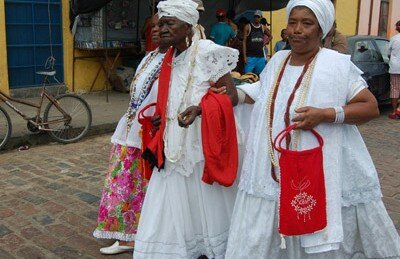One of the fastest growing economies in the world, Brazil is a colossal country located in eastern South America. It is world-famous for its attractive tourist destinations and cultural diversity. The roots of the Brazilian culture are found in African and European indigenous traditions and cultures. However, it draws much influence from the Portuguese culture after its 322 years of colonization.
The influence of the Portuguese saw Brazilian women clad in dresses/skirts made from Bordado Richelieu, a doily-like embroidered fabric that is very much like Venetian lace. During the late 19th and early 20th centuries, German, Japanese, Italian, Arab, and Spanish immigrants settled in Brazil and contributed a lot towards its multi-ethnic and multicultural society, that we see today.\
Brazil is a large country with diverse climatic conditions in different regions. Hence, the traditional clothing of Brazil varies from region to region. Traditional Brazilian Clothing Brazil is known internationally for its stylish and sophisticated clothing. The origins of the Brazilian traditional clothing are European, mostly Portuguese; the country was a Portuguese colony for 322 years, from 1500 to 1822. The indigenous tribes that lived in the area adopted the Portuguese-style clothing and adapted it to their climate and traditions. Because Brazil is formed by a union of 26 states, there is a great cultural diversity. The traditional clothing differs from one corner of the country to the other, but there are some common elements, such as the bombachas and the baiana dress.
True traditional Brazilian attire can be seen in the countryside, where men’s clothing includes shirts, jeans and dresses made from inexpensive cotton. In Rio Grande do Sul, the southern plain region of Brazil, the cowboys (gauchos) wear a distinctive dress: baggy trousers called bombachas, ponchos, wide straw hats and boots. The cowherds (vaqueiros) in the Northeast region wear a coat, hat and leather chaps. In Amazon, the native Amerindians wear traditional tunics and paint their faces. They make use of beads and feathers to decorate their bodies. They are known for their distinctive hairstyles and body painting.

Leave a reply